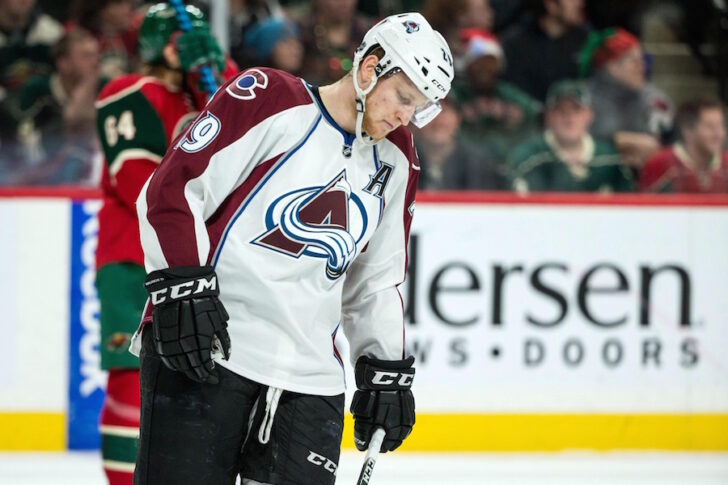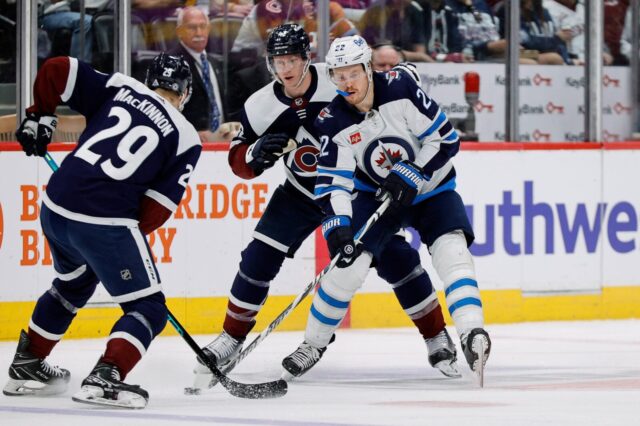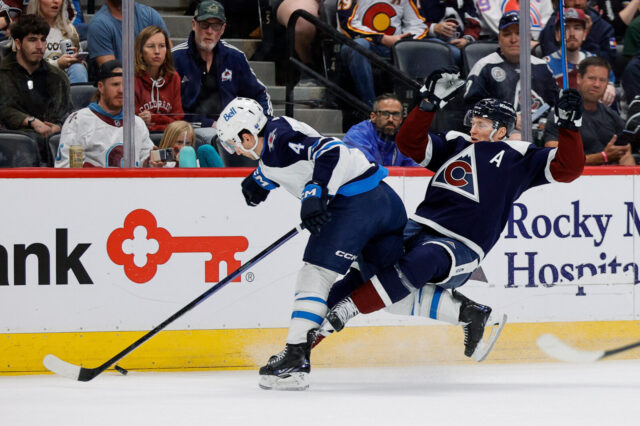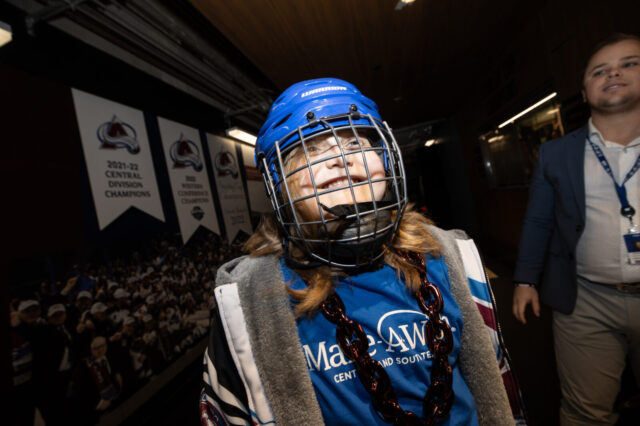In truth, this article could have been written on Dec. 4, the day after Erik Johnson broke his fibula. Now, the Colorado Avalanche’s nightmare season has finally officially ended.
It was a season full of highs and lows. The Avalanche’s goals against were a league-high 276. Their goals for, a league-low 165.
In essence, the Avalanche’s 2016-17 season was a complete and unmitigated disaster.
Here lies the remains of the campaign. A campaign that began with promise. A campaign that would end a mile outside the playoff picture.
Avalanche Territory should have known that the Avs were doomed from the get-go. After re-signing their own “core” players to extensions, there wasn’t much to go around in free agency. General manager Joe Sakic had to settle on misfits, players other teams didn’t want. Joe Colborne and Patrick Wiercioch were set to become restricted free agents, but were not tendered by their clubs. Fedor Tyutin was bought out of his contract.
Needless to say, the signings didn’t pan out. The three combined for 33 points.
Who they brought in isn’t the only reason the Avalanche were set up for failure. In August, head coach Patrick Roy abruptly quit. Leaving the Avalanche high and dry. It took some time for the players to adjust to his replacement, Jared Bednar, by the time they did, it was far too late.
The Avalanche won their first two games, both in dramatic fashion. The “cardiac kids” were back! Or so people thought. If you were one of the ones sipping the Kool-Aid early, it would soon sour. Only now are people finally able to start washing the terrible taste out of their mouths.
For two months, the Avalanche limped along. They teetered around .500. That was, until Johnson went down on Dec. 3. With the blueliner out of the lineup, they went from mediocre (at best), to historically bad.
7-27-2. That was the Avalanche’s record without Johnson. Now, they were only 9-13-1 before he got hurt. Still not good. But they likely wouldn’t have been the worst team in the shootout era had he stayed healthy.
In a word, things snowballed from there.
Sure, they lost starting goaltender Semyon Varlamov to season-ending hip surgery in January, but was he really ever healthy in the first place?
Now, at the end, we reflect on the Avalanche’s 22-56-4 record. At times, it was extremely hard to watch. They would usually show a flash in each game (save for the 10-1 drubbing at the hands of the Montreal Canadiens), but they simply could not sustain the effort for the full 60 minutes.
A lot of this, in my opinion, had to do with a lack of mental toughness. When you lose a lot, it becomes easier to lose, harder to prevent late surges from other teams. Also, when a team gets burned because of a poor turnover (something that has happened to the Avalanche a lot in the past couple of seasons), they will have less confidence with the puck. In a game of seconds, there simple isn’t time to second-guess yourself.
Part of the Avs’ struggles were also due to an identity crisis. A few years ago, the Avalanche were pushed around in a playoff series by the Minnesota Wild. They responded by getting bigger and adding veterans that proved to be past their prime (at least by this season).
A side-effect of them getting bigger was slowing down. The Avalanche still tried to play a game predicated on speed, but they simply didn’t have the team speed to do it.
Now, to be fair, the Avalanche did make several late-season additions that showed promise. Matt Nieto and Mark Barberio were plucked off of waivers. Sven Andrighetto was acquired via trade. J.T. Compher was brought up from the minors. Tyson Jost was inked to an entry-level deal and inserted into the lineup.
All of these additions played at least relatively well. Joe Sakic said he wanted to get “younger and faster.” All of these moves were in the direction of that goal. There you have it, a shred of optimism going into next season. There’s actually a lot of reasons for optimism this summer, but that’s another story for another day.
This is about putting this season behind us, moving on.
This season was so bad that Jarome Iginla was actually the Los Angeles Kings’ nomination for the Bill Masterton Trophy. It’s an award given to the play the qualities of perseverance, sportsmanship and dedication to hockey. Why was Iginla nominated? Because he endured three-fourths of a season on the Avalanche.
What’s the best thing about the 2016-17 campaign for the Avalanche? That it’s over, of course. It’s like a sickly dog that a family loves too much to euthanize. This St. Bernard should have been put down some time ago.



